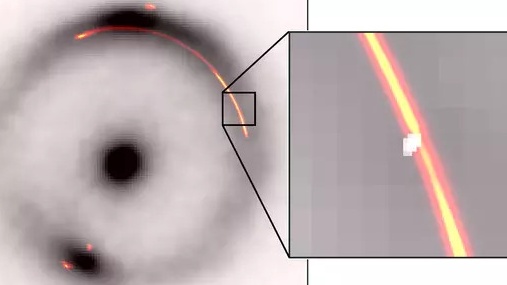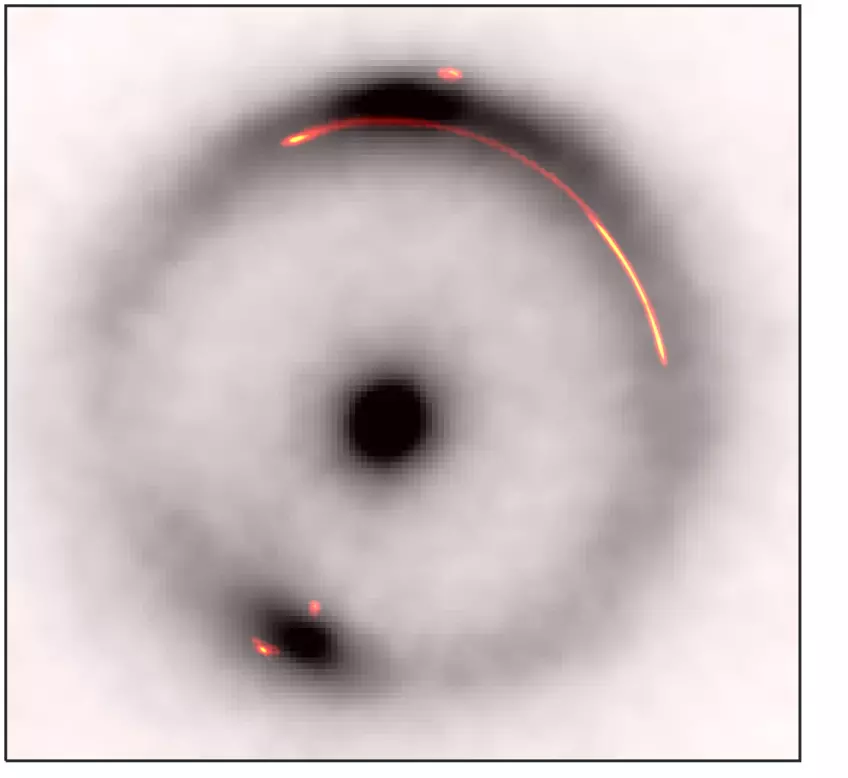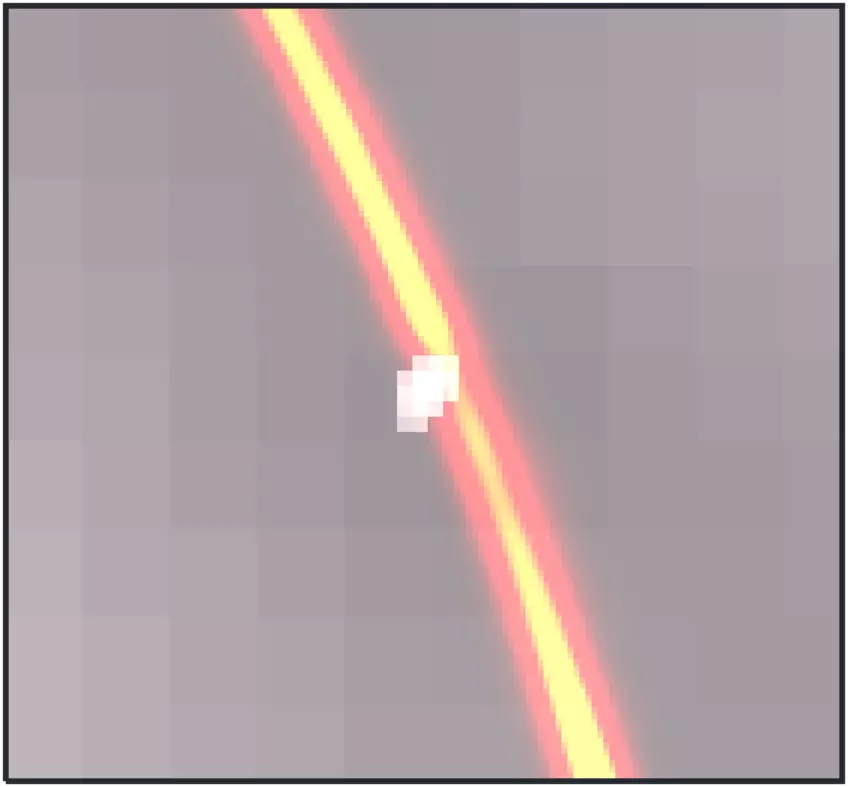This might be the smallest clump of pure dark matter ever found
The dark object has a mass a million times greater than our sun's is located 10 billion light-years away and has no stars.

A "dark object" detected as an anomalous notch in the arc of a gravitationally warped section of space, could be the smallest clump of pure dark matter yet found.
If so, it would further validate the concept of cold dark matter and will help constrain the properties of dark matter particles as physicists and astronomers continue to hunt for what exactly the invisible substance is made from.
"Hunting for dark objects that do not seem to emit any light is clearly challenging," said Devon Powell of the Max Planck Institute for Astrophysics in Germany in a statement.
The discovery came as a byproduct while scientists were observing an Einstein ring. This is the most spectacular form of gravitational lensing in which the gravity of a foreground object — in this case a massive elliptical galaxy — is warping space. The light from a background galaxy, almost perfectly aligned with the elliptical galaxy and our line of sight, is lensed into an almost complete ring around the foreground galaxy.
Combining the power of radio telescopes across the world, including the European Very Long Baseline Interferometric Network of radio telescopes in Europe, Asia, South Africa and Puerto Rico, plus the Green Bank Telescope in West Virginia in the U.S. and the Very Long Baseline Array in Hawaii, gave astronomers an instrument with a baseline almost as large as Earth.
The larger the baseline, the smaller the details that can be seen.
Astronomers led by John McKean of the University of Groningen, the University of Pretoria and the South African Radio Astronomy Observatory, and Devon Powell of the Max Planck Institute for Astrophysics in Germany, were aiming to resolve the lensed image of a compact symmetric object (CSO). This is an object, such as an active supermassive black hole, that is producing relatively small (smaller than 3,200 light-years) lobes of radio emission.
Breaking space news, the latest updates on rocket launches, skywatching events and more!
The team succeeded in identifying the CSO, but in doing so spotted something even more tantalizing. The data had to be analyzed with algorithms running on supercomputers that can produce a "gravitational image," which in essence maps where the gravity is. Close inspection of the gravitational image turned up something surprising: a notch in the arc of radio emission belonging to the CSO and its host galaxy. This notch can only be produced by another object between the background and foreground galaxies and with a mass a million times greater than our sun.
There are two explanations. One is that it is an inactive dwarf galaxy while the other, given that the object seems completely dark, is that it is a relatively small clump of dark matter: the smallest ever seen on its own, by a factor of 100, that's located 10 billion light-years away from us.
"Given the sensitivity of our data, we were expecting to find at least one dark object, so our discovery is consistent with the so-called cold dark matter theory on which much of our understanding of how galaxies form is based," Powell said. "Having found one, the question now is whether we can find more and whether the numbers will agree with the models."


Cold dark matter is the leading model of dark matter, which posits that it is made from low energy particles that can clump together through their mutual gravity. If dark matter were "hot," meaning high in energy, then it wouldn't be able to clump because all its particles would be speeding through space at almost the speed of light, like neutrinos do.
The question has always been, how small can clumps of cold dark matter become? And can small dark matter clumps exist without forming stars inside them? The size of the smallest dark matter clumps can therefore place constraints on the properties of dark matter particles.
"Finding low-mass objects such as this one is critical for learning about the nature of dark matter," said team-member Chris Fassnacht of the University of California, Davis.
The findings are described in two papers, one in Nature Astronomy discussing the dark object, and one in Monthly Notices of the Royal Astronomical Society focusing on the CSO.

Keith Cooper is a freelance science journalist and editor in the United Kingdom, and has a degree in physics and astrophysics from the University of Manchester. He's the author of "The Contact Paradox: Challenging Our Assumptions in the Search for Extraterrestrial Intelligence" (Bloomsbury Sigma, 2020) and has written articles on astronomy, space, physics and astrobiology for a multitude of magazines and websites.
You must confirm your public display name before commenting
Please logout and then login again, you will then be prompted to enter your display name.
